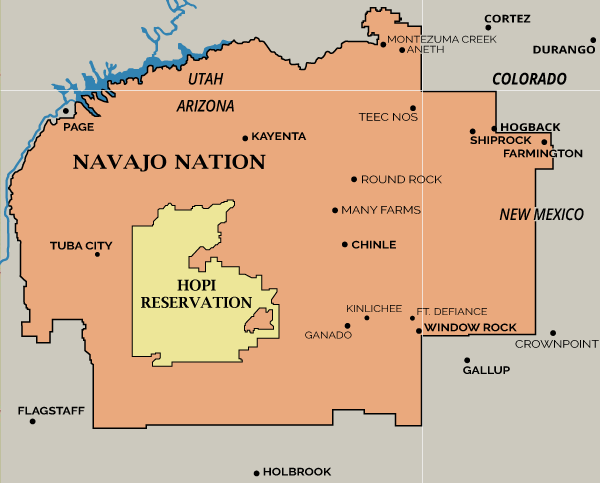Introduction
The Hopi are Pueblo Indians who live on and adjacent to three mesas in the northwestern corner of Arizona. Their relatively small reservation is surrounded on all sides by the much larger Navajo reservation. Because of their relative isolation and the harshness of the environment, the Hopi people have been less impacted by European contact than have some other tribes. Like their ancestors, the modern-day Hopi are farmers and craftspersons who follow a complex ceremonial cycle to ensure the well being of the world.

Required Readings
Griffin-Pierce Chapter 3 (textbook)
Resources
Watch this film clip - Hopi; Songs of the Fourth World. This is a 59 minute video.
Learning Objectives
- Students will be able to describe how the environment of the Hopi mesas has shaped Hopi lifeways
- Students will be able to describe the social and political organization of the Hopi, and explain the advantages that this organization has in terms of the environmental setting.
- Students will be able to describe how the clans, kachina society, and phratry system have contributed to the longevity of the Hopi
- Students will be able to describe the role that coal deposits on the Hopi Mesas have played for the Hopi, both in prehistoric and historic times
- Students will be able to describe some of the modern issues facing the Hopi
- Students will be able to define major terms and concepts relevant to understanding the Hopi culture
Major Concepts and Terms
- Hisatsinom
- Old Oraibi
- Floodwater farming
- Ak chin farming
- Piki
- Endogamous
- Phratries
- Kachina
- Clowns
- Tihu or tithu
- Niman
- Coal
- Hopi-Navajo land dispute
Additional Resources
|
Piki bread making
|
|
Hopi-Navajo land dispute
|
|
Peabody-Coal Mine dispute - https://orionmagazine.org/article/the-black-mesa-syndrome/
http://www.huffingtonpost.com/2013/06/06/coal-mining-navajo-nation_n_3397118.html
|
Click on next page to continue.
